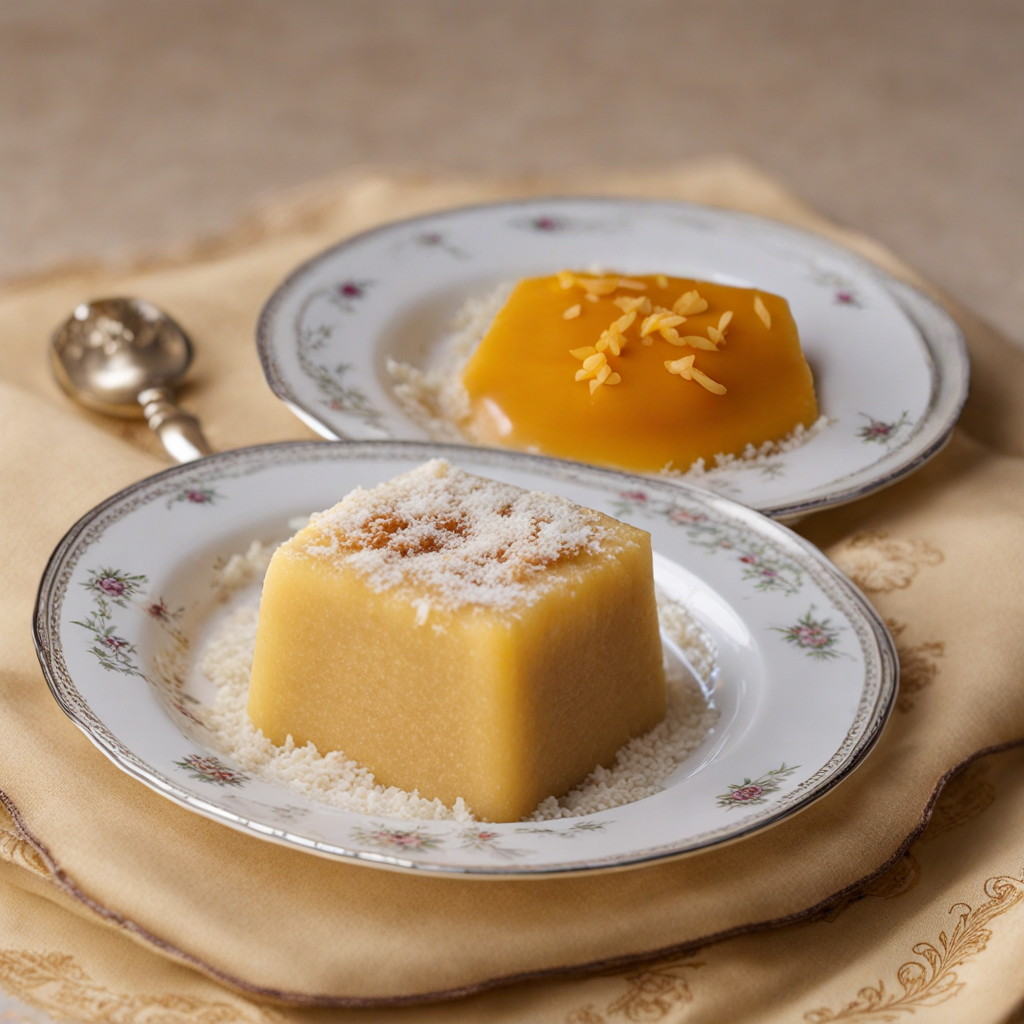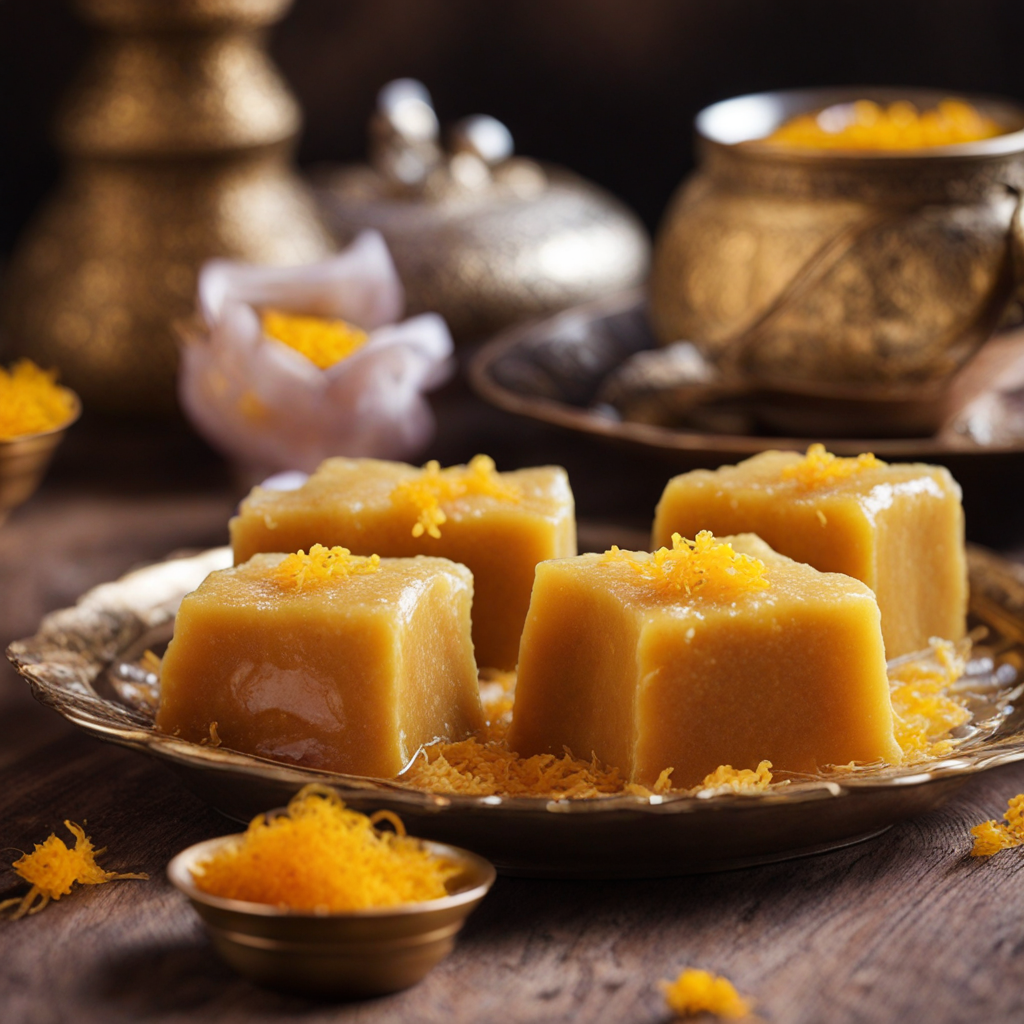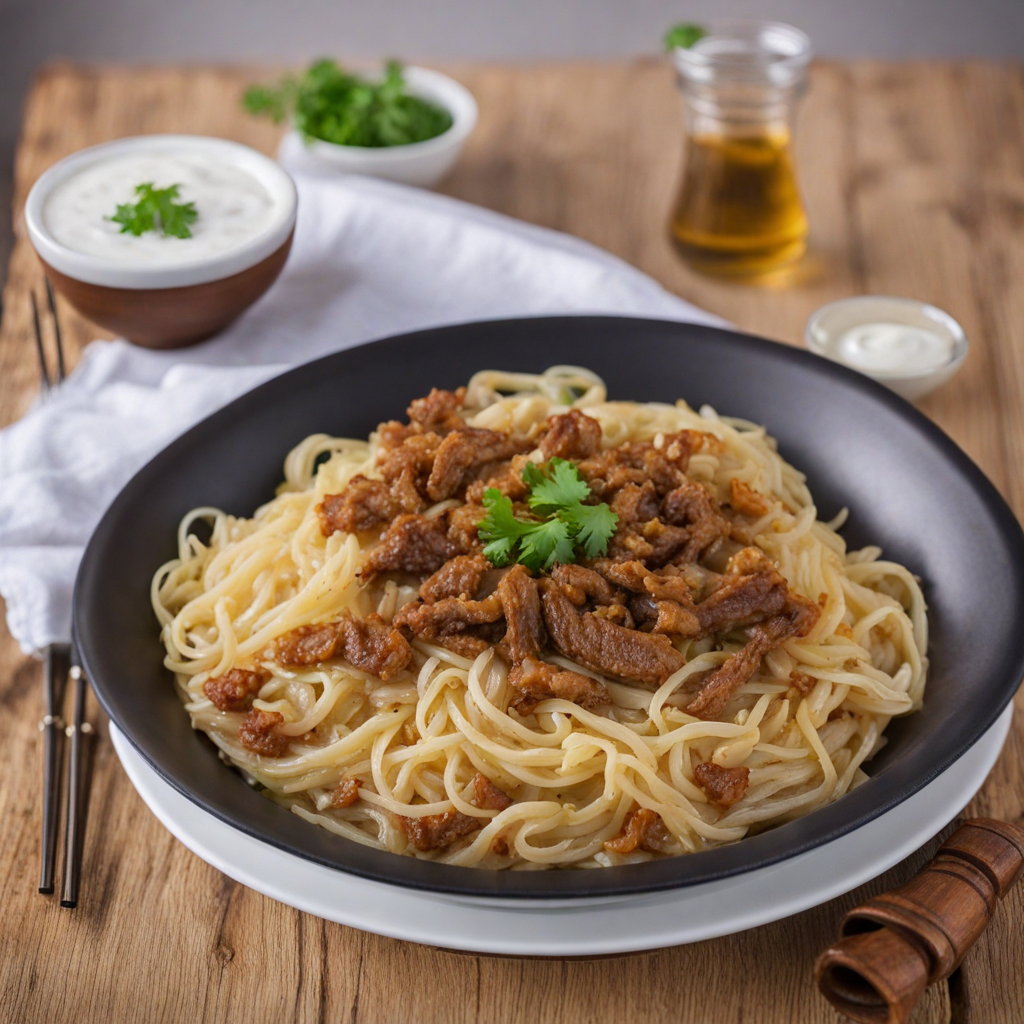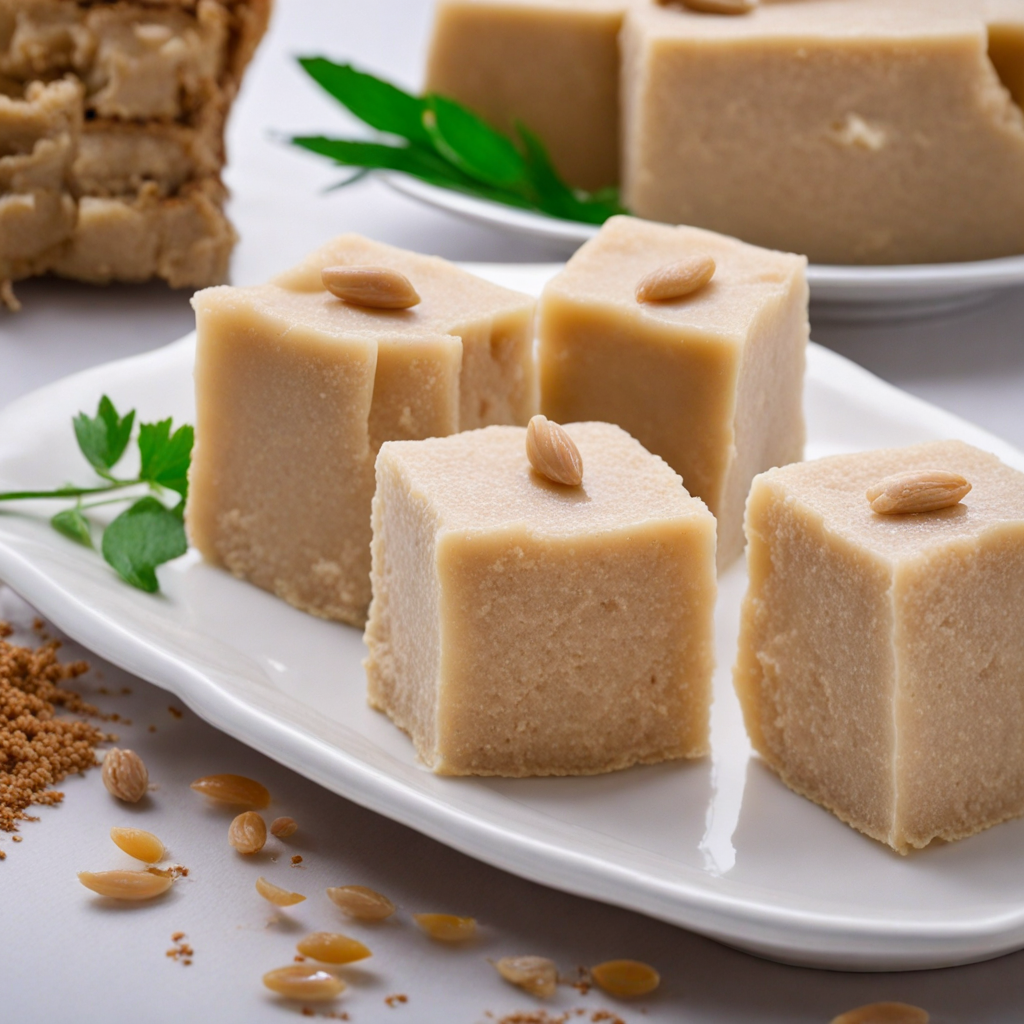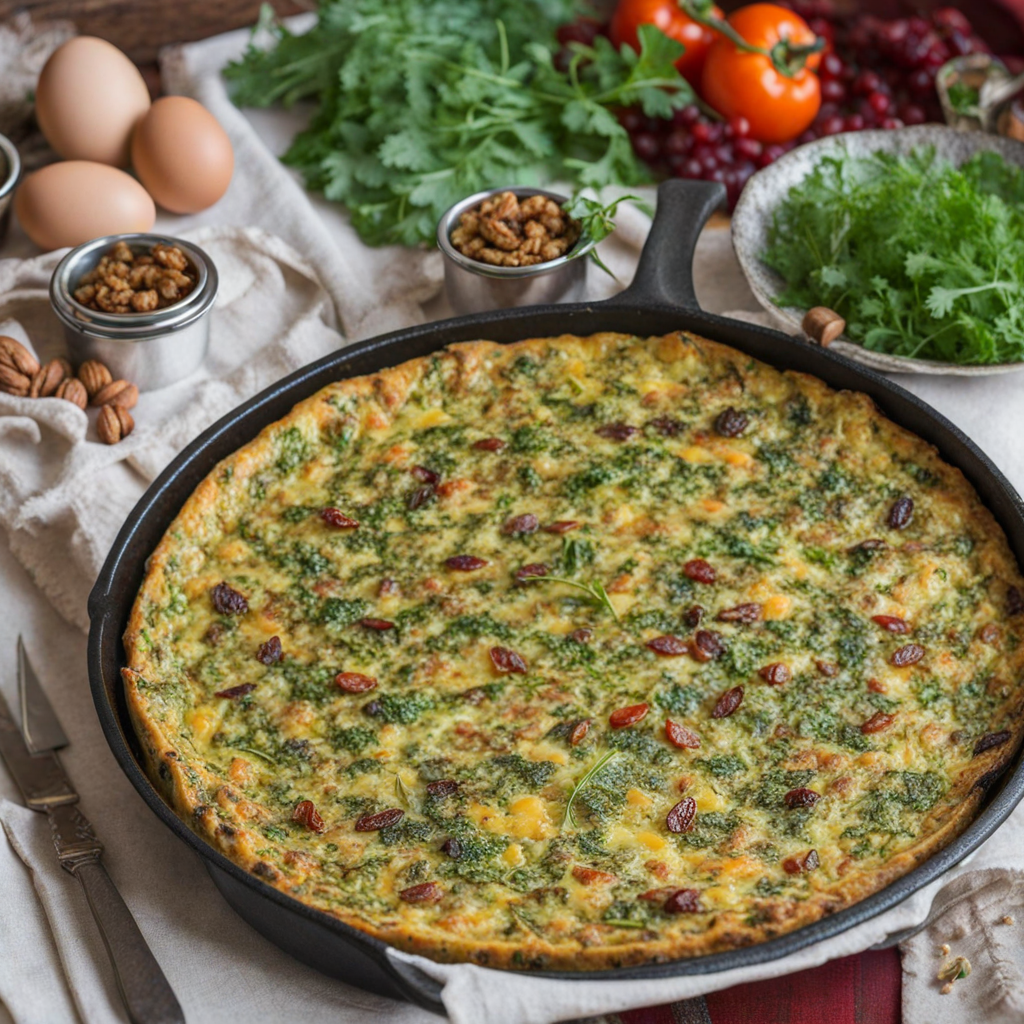Sheki Halva
Sheki Halva is a traditional Azerbaijani dessert that embodies the rich culinary heritage of the Sheki region. This exquisite sweet treat is made from a unique combination of flour, sugar, and a variety of nuts, often including walnuts and hazelnuts, which create a delightful crunch and a nutty flavor that complements the sweetness. The halva is usually layered and filled with a sweet syrup, infusing it with a rich, aromatic essence that tantalizes the taste buds. The careful preparation and the use of high-quality ingredients reflect the dedication to preserving this age-old recipe, making Sheki Halva a true culinary treasure of Azerbaijan. One of the defining characteristics of Sheki Halva is its intricate design and presentation. It is often adorned with beautiful patterns, making it not only a delicious treat but also a feast for the eyes. The halva can be served in various forms, such as squares or diamond shapes, and is sometimes dusted with powdered sugar or garnished with additional nuts. This attention to detail elevates the dessert, transforming it into a centerpiece for special occasions and celebrations, where it is often enjoyed alongside tea. Beyond its visual appeal, Sheki Halva delivers a harmonious balance of flavors and textures. The outer layers are slightly crispy, while the inside remains soft and chewy, creating an enjoyable contrast with each bite. The sweetness is perfectly balanced, making it an ideal dessert after a savory meal or as an afternoon snack. This delightful halva is not just a treat; it is a symbol of Azerbaijani hospitality and culture, inviting those who taste it to experience a piece of the country's rich culinary tapestry.
How It Became This Dish
The History of Shaki Halva: A Sweet Symbol of Azerbaijani Culture #### Origins Shaki Halva, a traditional sweet from Azerbaijan, particularly associated with the town of Shaki, boasts a history that intertwines with the rich tapestry of Azerbaijani culture. The roots of halva can be traced back thousands of years across various civilizations, with its name derived from the Arabic word "halwa," meaning sweetness. While halva exists in numerous forms across the Middle East, Central Asia, and the Indian subcontinent, Shaki Halva is distinctive not only for its unique ingredients but also for its deep cultural significance. The earliest records of halva date back to ancient Persia, where it was made using various cereals and sweeteners. Over the centuries, the recipe evolved, influenced by the regions it passed through. In Azerbaijan, the introduction of halva is believed to coincide with the Silk Road's flourishing trade routes, where merchants exchanged not just goods but culinary traditions as well. The town of Shaki, located in the foothills of the Greater Caucasus, became a melting pot of cultural influences, enabling it to develop its own version of this beloved sweet. #### Cultural Significance Shaki Halva is more than just a dessert; it symbolizes hospitality, celebration, and communal ties in Azerbaijani culture. Traditionally, it is served during significant life events such as weddings, religious holidays, and family gatherings. The preparation of Shaki Halva often becomes a communal activity, with family members coming together to create this intricate sweet, reinforcing bonds and shared traditions. In addition to its role in celebratory occasions, Shaki Halva is also a symbol of regional pride. The town of Shaki, known for its rich history and beautiful architecture, claims this delicacy as part of its cultural heritage. The production of Shaki Halva has turned into a craft, with local artisans honing their skills over generations, ensuring that the traditional methods are preserved while also adapting to modern tastes. #### Ingredients and Preparation The hallmark of Shaki Halva lies in its unique combination of ingredients and its elaborate preparation process. Unlike other types of halva that are primarily made from semolina or tahini, Shaki Halva is typically crafted from a blend of flour, butter, sugar, and nuts, often featuring hazelnuts or walnuts. The dough is layered and filled with a mixture of finely ground nuts and sugar, creating a rich, textured sweet that melts in the mouth. The preparation of Shaki Halva involves several intricate steps. The dough is first prepared by cooking flour in butter until it reaches a golden color. This mixture is then allowed to cool before being rolled out and filled with the nut mixture. The layers are meticulously folded and shaped, often resulting in a beautifully presented sweet that is both visually striking and delicious. The craftsmanship involved in making Shaki Halva is a point of pride for many Azerbaijani families, with each household often having its own secret recipe or technique passed down through generations. This deeply personal connection to the preparation of halva reinforces its role as a cherished family tradition. #### Development Over Time As Azerbaijan transitioned through various historical epochs—from ancient empires to Soviet rule—the production and consumption of Shaki Halva adapted to the changing socio-political landscape. During the Soviet era, traditional foods like Shaki Halva faced challenges as globalization and industrialization began to influence culinary practices. However, local artisans and families remained dedicated to preserving their culinary heritage, ensuring that traditional recipes were not forgotten. In recent years, there has been a renaissance of interest in traditional Azerbaijani cuisine, including Shaki Halva. The rise of culinary tourism and the global appreciation for authentic, artisanal foods have prompted a revival of traditional recipes and cooking methods. Festivals celebrating Azerbaijani culture often feature Shaki Halva, where visitors can witness the preparation of this sweet delicacy, learn about its significance, and, of course, indulge in its sumptuous flavors. The recognition of Shaki Halva extends beyond Azerbaijan's borders. In 2016, the town of Shaki was inscribed as a UNESCO World Heritage Site, highlighting its cultural and historical significance. This recognition has further enhanced the visibility of Shaki Halva, bringing it into the international culinary spotlight. #### Modern Interpretations Today, Shaki Halva is not only enjoyed in its traditional form but has also inspired modern interpretations. Chefs and food enthusiasts are experimenting with flavors and presentations, incorporating local ingredients and innovative techniques while respecting the essence of the original recipe. For instance, some contemporary versions might include exotic spices or fruit infusions, blending traditional Azerbaijani flavors with global culinary trends. The modern interpretation of Shaki Halva also reflects a broader trend towards sustainability and local sourcing. As the farm-to-table movement gains momentum, many producers are emphasizing the use of locally sourced nuts and organic ingredients, ensuring that the sweet remains connected to its Azerbaijani roots. #### Conclusion Shaki Halva stands as a testament to the rich culinary heritage of Azerbaijan. With its intricate preparation, unique flavors, and deep cultural significance, it symbolizes the enduring spirit of Azerbaijani traditions. As the world continues to embrace global cuisines, Shaki Halva serves as a delicious reminder of the importance of preserving cultural identity through food. Its journey from ancient Persia to modern Azerbaijan encapsulates the resilience of culinary traditions, demonstrating how food can connect people, tell stories, and celebrate community. Through its sweet layers, Shaki Halva invites all to partake in a taste of Azerbaijan's history, culture, and enduring hospitality.
You may like
Discover local flavors from Azerbaijan


